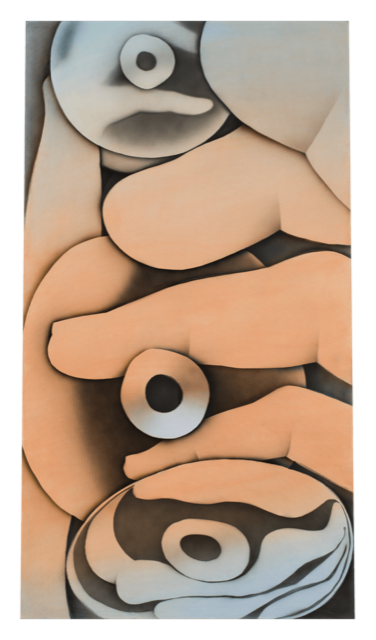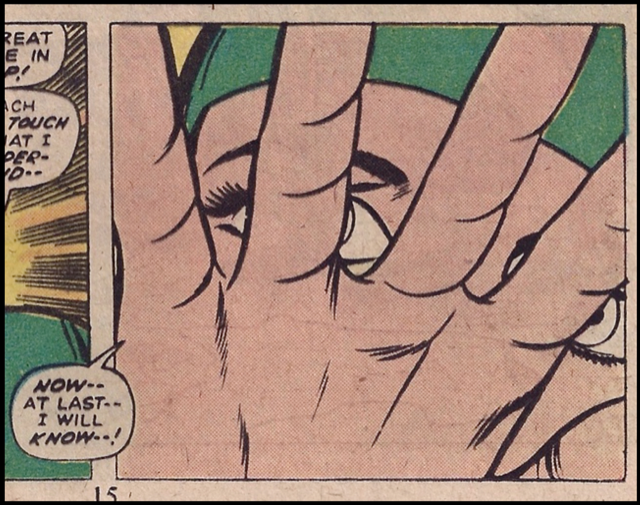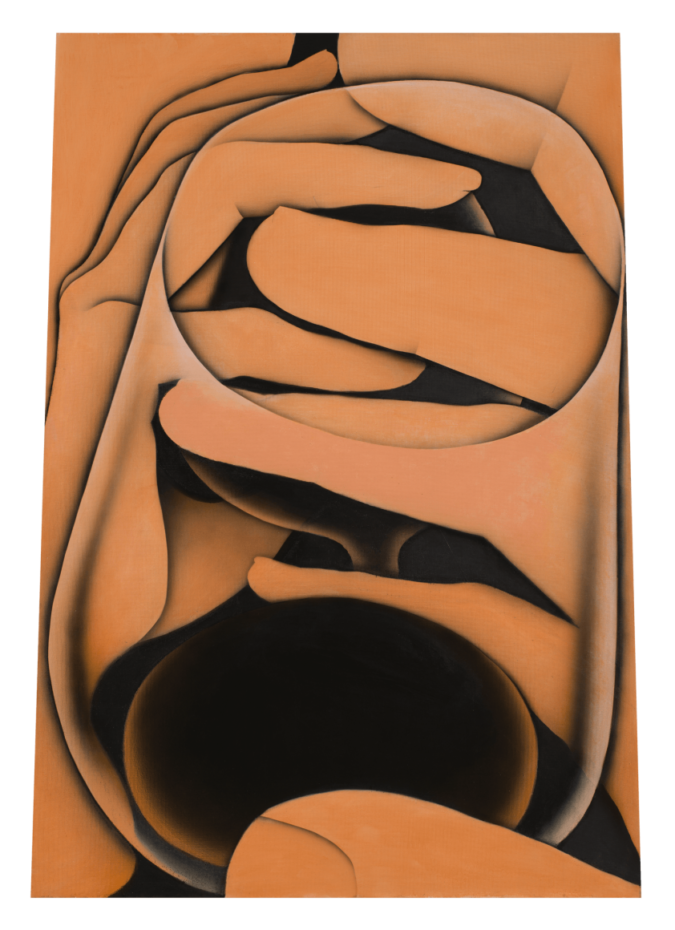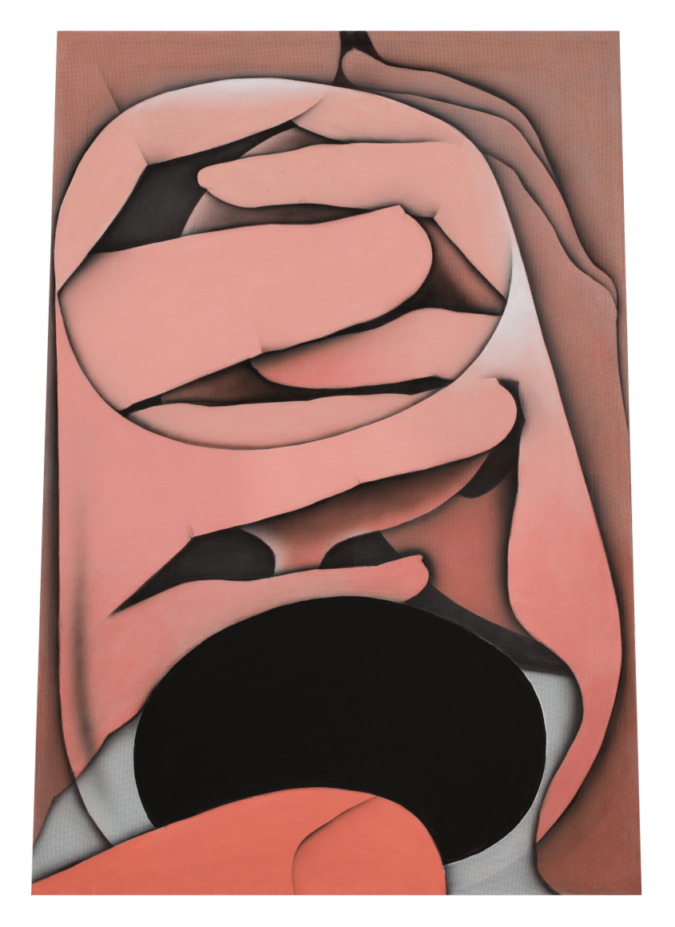Alexi Worth
Question
I looked at your new “wine glass” paintings for a long time before I could see wine glasses. And it took me a bit longer before I saw that there are two glasses and two hands and two pools of liquid, in every painting. It took a while to decipher the puzzle pieces. The discrepancy between what we see at first and what is actually going on seems to be a key element of your work. I’m curious about that kind of delay. Why do you prefer to make images that are difficult, or at least a little hard to read?
Answer:
When I started out as a young painter, I was committed to plainness. I wanted my work to be like 1960s comics–with some extra qualities maybe, but that clear. And now you’re right, I’ve gone quite a ways over toward the other side. Even just the phrase “a difficult painting”—that sounds good to me. But I still love clarity, and all of my paintings include obvious things– things nobody could miss. In my current show giant fingers are the first thing you see, and they are unmistakable, very bright and sharp-edged. I think their obviousness mis-sets our expectations in a funny way, so that you feel you have a right to understand everything else as immediately. But you don’t. I’m interested in that mix of extreme clarity and uncertainty. That corresponds to my sense of things.

Ladder, 2022, Mixed media on mesh, 82 x 46 inches
I’ve been haunted for years by a Jack Kirby panel where a blind woman reaches out towards us, so that her hand almost entirely blocks our view. The previous panels in the sequence are normal super-legible comics panels, but this one is suddenly, jarringly, harder. It’s all skin, all palm. Her hand is so close that it’s as if she’s about to break through the fourth wall and touch your face.

My giant hands are really very similar; they occupy the extreme foreground– where everything is most near and clear and usually least difficult to see. I imagine all my paintings in that subjective POV space, seen by a single close viewer. I want that viewer to recognize themselves, to see a shadow as their own shadow, a reaching hand as their own hand, a glass as their own glass. The viewer become the “I.” But I think the suggestion is more powerful if it’s not explicit. If the viewer can gradually unlock the image, there’s a feeling of discovery and participation that puts them in the right frame of mind to entertain this fanciful idea that they are already in the picture.








Another one-two knockout from an artist who throws from both halves of the brain. Love the comic crop including “touch” and “know”. Never thought of Worth as heir to Lichtenstein, but appreciate how Lichtenstein’s life beyond the canvas appears here center frame. And how Worth’s tapered stretchers impart a bit of monumental distance to a show about proximity. LH